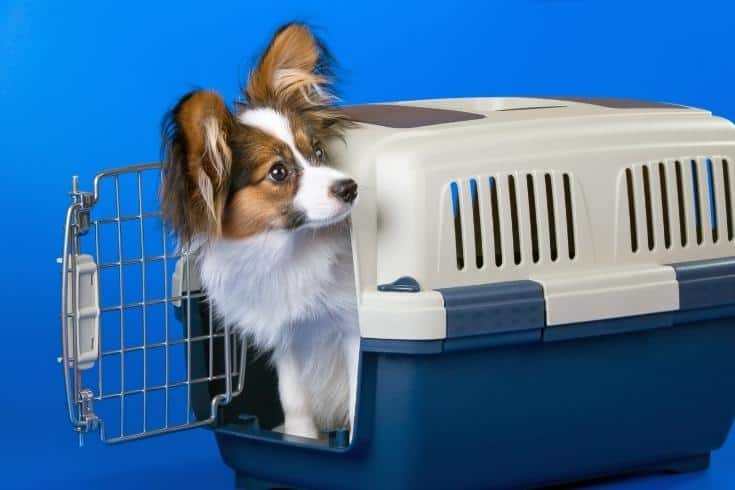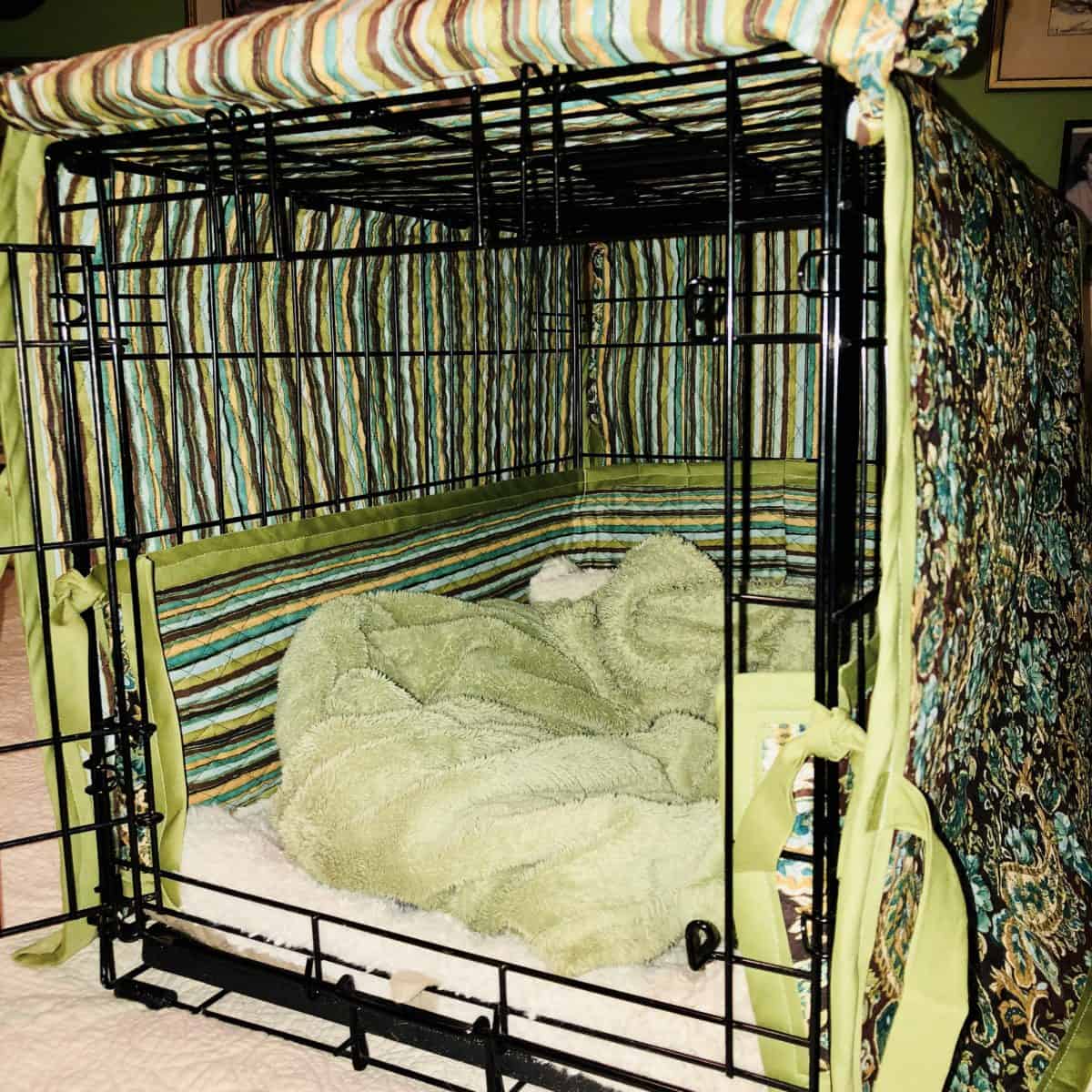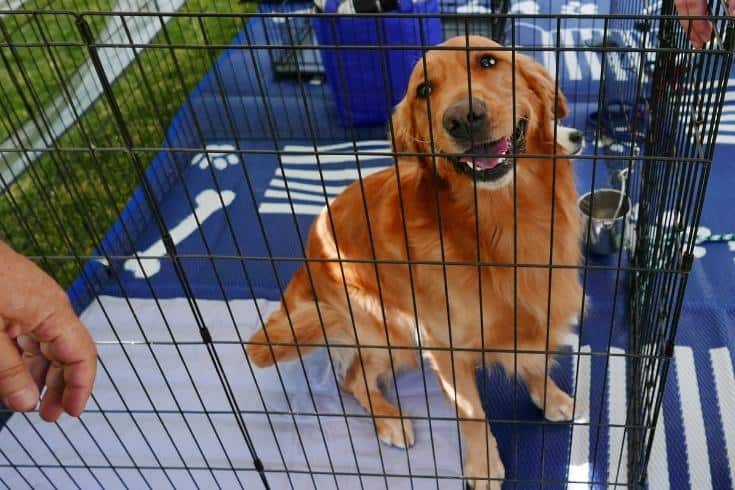When it comes to pet ownership, the safety and well-being of our furry friends is always top of mind. Crates can be a great way to provide a safe and comfortable space for a pet, but it is important to ensure that it is not a source of stress and anxiety. In this blog post, we will explore the question of whether dogs feel safe in their crates. We will analyze how the crate design and environment affects the dog’s level of comfort, how to properly introduce the crate to your pet, and the signs that your pet may be feeling anxious or scared. With the right approach and understanding, a crate can become a safe haven for your pet.
Clubs Offering:
|
Makes Potty Training Quicker And Easier
Dogs won’t voluntarily soil their sleeping area, so keeping your dog in a crate for brief periods of time can help teach him to hold it until you let him out of the crate as a housetraining tool.
Select a crate that is the right size for your dog, and use a crate divider to make it smaller. That may assist in preventing your dog from using the crate’s one end as a bathroom. When your puppy is fully potty trained and has grown, you can move the divider to give your pet more room.
A crate can be used to train your dog appropriate behavior, though you should never lock your dog in it as a punishment. The most popular things for nibbling include your shoes, carpets, door frames, wooden furniture, and anything that smells like food. Teething puppies are notoriously destructive little creatures that will make a meal of pretty much anything they can grab hold of.
Chewing and destructive behaviors can be dangerous to your puppy if he gets hold of anything toxic or dangerous, like power cables, in addition to being extremely annoying and potentially expensive.
Dogs are naturally curious creatures who have no qualms about consuming trash, leftovers, household cleaners, and other items. That could be very harmful for your pet, particularly if he consumes some of your medication or nibbles on something poisonous, like week killer.
You can help keep your dog safe and out of harm’s way by keeping him in his crate when you’re not around to watch over him.
If there is a crisis, such as a house fire, an earthquake, a tornado, etc. , you’ll need to get your dog to safety immediately. If your pet is securely segregated in his crate, it will be much simpler for you and the emergency personnel to assist him.
It is much safer to keep your dog in a travel crate when you are traveling with them.
In some areas, distracted driving is an offense, and a dog bouncing around inside your car is not only dangerous, but it’s distracting, too. So, by keeping your dog confined to a crate while you’re on the road, you’re staying within the law and making travel safer for everyone.
A dog crate can be a great alternative sleeping arrangement for your dog if they have been ill or are recovering from surgery.
Additionally, if your dog is admitted to the vet’s office, he will spend his downtime in a crate, so training him to use one will keep him calm in what could be a very stressful situation.

Let’s now examine some widespread misunderstandings about crate training.
So, Do Dogs Prefer Crates Or Beds?
A properly designed crate can give a dog the experience of having a small, secure space or den to feel comfortable and safe in.
If you don’t give your pet a crate, he’ll probably look for another similar enclosed space, like under furniture or in a room corner. Some dogs have even been known to dig holes in backyard bushes and curl up there.

Your goal should be to make your dog’s crate feel cozy and familiar so that it becomes his preferred place for resting and lounging.
There are various crate sizes, so make sure the one you select is the right one for your dog. As a result, your pet needs to be able to:
Having said that, the crate shouldn’t be too big for the dog to use as both a sleeping area and a bathroom.
Choose a collapsible metal wire crate with a divider panel if you want to buy one so your puppy can grow into it. You can use a divider panel to make the crate smaller for a puppy and move it as the puppy grows to gradually increase the space.
The crate should be well-ventilated. The best ventilation is provided by collapsible metal crates, but a hard-sided plastic crate is also acceptable because it has mesh front doors and built-in ventilation down the sides.
A material crate with mesh windows is also acceptable for use when traveling with your dog, as are furniture crates with holes punched into the aesthetic design that provide your pet with excellent airflow.
It’s important for your dog’s crate to be cozy, so you should install a crate mat or pad so that your pet has a comfortable place to curl up and sleep.
In the summer and if you have to leave your dog alone for a few hours, your dog should have access to water in his crate. A special dog crate water bowl or a crate water bottle can be used to provide water.

You can begin crate training your dog once you’ve chosen the best crate and set it up for your pet.
We must emphasize that successful crate training takes time, and rushing things could cause your dog to grow afraid of crates, which is obviously the last thing you want to happen.
When crate training your dog, use positive reinforcement techniques to help him learn to enjoy being in his crate. When you succeed in doing that and your dog is aware of your house rules, he will enjoy spending time in his crate.
Your dog will consider his crate to be the ideal place to relax and a cozy, den-like bedroom where he can spend a lot of time at night.
FAQ
Do dogs like being in their cage?
Dogs who appear to “love” their crates because they keep returning to them even after being released from them, say experts cited in the book, are frequently actually displaying a lack of self-confidence or even fearfulness toward the outside world brought on by the extreme confinement and isolation of a crate.
Do dogs care about being in a cage?
It’s a question most dog owners ask. When making this choice, it’s important to keep in mind that dogs are denning animals, even though it can seem sad and isolating. As a result, unless they have had a traumatic experience with crates in the past, they do not have negative feelings about them.
Why does my dog feel safe in his crate?
Crates, when used appropriately, become a dog’s “den”. It’s a location they can retreat to when they need to feel safe. Many dogs are house trained using this method. because they typically won’t urinate where they rest
Do dogs like sleeping in their crate?
Dogs enjoy being in enclosed spaces like crates because they are den animals. That means your best friend might instinctively prefer the safe environment the crate offers. For dogs who experience anxiety, that sense of security can be beneficial, especially during a stressful situation like a thunderstorm or the Fourth of July.